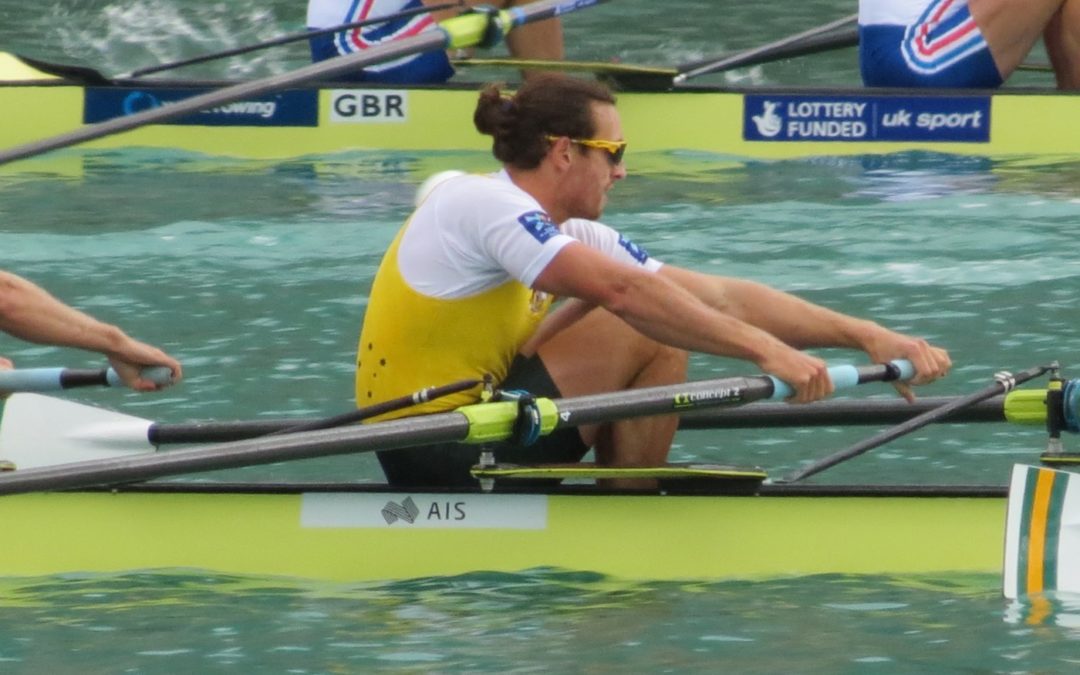Shoulder the load
The shoulder girdle is a region where huge performance losses can occur and where the transfer of force, if not executed well can lead on to other injuries. The upper limb is listed in the top 5 regions for injury too.
Shoulder pain in rowing athletes is generally caused by poor shoulder girdle posture and stabilization during the stroke. It may also be linked to resistance training practices as the shoulder is one of the most commonly injured areas in the gym. The mechanics side is very complex as the shoulder girdle cannot be seen as separate from structures like the thoracic spine, ribs, neck and upper limb. All of which can affect shoulder position and function. The ball and socket nature of the key GH joint also lends itself to a huge freedom of movement so a lot of control, read muscle contraction, must be recruited to keep it in a good position to apply force and transfer it. Most injuries are often a type of muscle of tendon impingement/irritation rather than capsular or bony issues but these can occur, more frequently to the outside arm of sweep rowers in our sport.
The term ‘weak’ is often thrown around regarding the shoulder, particularly in regards to muscles like the rotator cuff but this is really a misleading term – in most cases the muscles are not ‘weak’ they may just not be working effectively, switching on at the right time, underutilized or in a poor position. A great example of this is the rower who is very upper shoulder dominant – we have all seen the athlete who hunches their shoulders up as the load comes onto the handle and seems to muscle the arm draw through with their traps (the muscles on top of the shoulder) with great contraction at the neck. This movement is usually caused by poor technique and an over-dominance of these muscles or because the shoulder and midspine lack good movement abilities to spread load. Very rarely are the posterior shoulder muscles just so weak that these muscles need to take over and a good fix is re-training the arm draw and getting a better position for the shoulder and midspine/neck so the shoulder can work more effectively.
Another great example of shoulder compromise is the athlete who is very anterior dominant in the upper limb and torso – someone who usually has large tight pecs, larger biceps and anterior deltoids (front of the shoulder in the shoulder pad region). This athlete often curls forward and protracts the shoulders at the drive and finish. Again this is not a good position for the shoulder, it relies too much on some of the wrong muscles and it can even lead to increased risks of shoulder injury due to the lack of space in the front and medial side of the joint when the protraction occurs. The athlete describes often has poor midspine mechanics and can be found, mostly in male form and mostly on the bench press or ezy-curl bar in the gym. Focusing only on ‘beach curls’ is a sure fire way to mess up your shoulder mechanics for a pulling sport like rowing.
Some keystone research correlations for shoulder injury or poor mechanics are:
Years of training and days of practice per week (obvious really- more training, more load, more potential chance of something going wrong one day)
Poor thoracic (midspine) mechanics – the shoulders hang off this part of the spine remember
Restricted cervical (neck) spine movement
Anteriorly place glenohumeral head
Tight posterior capsule
Anterior dominance (as above) and or poor posterior stabilizer activation
Some great ways to avoid shoulder issues are:
Get your arm draw mechanics right – the shoulder is very mobile, if your connect your arm and torso well in the stroke and this region is stable you will have no issue and the transfer from foot to blade will be far better. A great way to start is not dropping your shoulders and elbows on the way into the catch – this will help you start the draw in a better position
Don’t just do bench press and biceps curls for your upper body – these exercises are fine but you need to work on your back as well and do upper limb exercises in multiple planes of motion so you are not always training in the same position. Variability of movement is the spice of movement life
Make sure your mid spine is not restricted and the surrounding muscles aren’t tight – use the foam roller on your middle back, lats and shoulder muscles after rowing to get loose and get some fluid flow in these regions see our early note on this: www.batlogic.net/news
Do work on seated rows, scapula retraction and other pulling exercises in the gym to give you good movement and good strength across the whole joint
Work on transferring force and stabilizing through the lat muscles in the gym and in-boat/on the ergo. The lats are your friends
You can gap you GH joint, give your stabilizers a good stretch and add some control by simply hanging of a chin up bar – both arms up overhead as a recovery after rowing. This will also often offload your midspine that has likely been flexed when in the boat or on the erg for long sessions – it feels good. If it doesn’t feel good and you get anterior shoulder pain then stop and get a professional to take a look
Stretch your traps and pecs regularly
Don’t sit all day at work – this is actually good for every body part and every athlete – slouching in a seated position all day puts added stress on your spine, can flex the spine and protract your shoulders. Get up out of that chair and move when you can
Keep moving and keep well – happy rowing.

